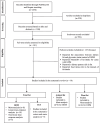The association of dietary fat intake before and during pregnancy with the risk of gestational diabetes mellitus and impaired glucose intolerance: a systematic review and dose-response meta-analysis on observational investigations
- PMID: 40696412
- PMCID: PMC12281954
- DOI: 10.1186/s12937-025-01186-6
The association of dietary fat intake before and during pregnancy with the risk of gestational diabetes mellitus and impaired glucose intolerance: a systematic review and dose-response meta-analysis on observational investigations
Abstract
Background: Previous studies investigating the relationship of dietary fat intake with gestational diabetes mellitus (GDM) and impaired glucose tolerance (IGT) have yielded inconsistent findings. Therefore, the relationship between fat intake before and during pregnancy and risk of GDM and IGT was assessed.
Methods: A comprehensive search was conducted using electronic databases up to June 2024. Our selection criteria focused on observational studies that reported odds ratios (ORs)/ relative risks (RRs)/ hazard ratios (HRs) and 95% confidence intervals (CIs) for the associations between total, animal or plant fat intake and risks of GDM and IGT.
Results: A total of 14 studies comprising 39,399 participants were included. Comparing the highest versus lowest intakes of total, animal, and plant fat revealed the summary RRs of 1.49 (95% CI: 1.20, 1.83), 1.56 (95% CI: 1.32, 1.85), and 1.26 (95% CI: 1.08, 1.47), respectively, indicating significant positive associations of total, animal and plant fat with GDM. Subgroup analysis indicated that total fat intake during pregnancy had a stronger association with GDM than pre-pregnancy intake. For animal and plant fat, significant associations were only observed for intake during pregnancy. Based on the linear dose-response analysis, each 5% energy increment in total dietary fat during pregnancy was associated with a 6% increased risk of GDM (RR = 1.06; 95% CI: 1.03, 1.10). The non-linear dose-response analysis indicated an increasing trend between total fat intake during pregnancy (23%-50% E) and the risk of GDM. However, there was no significant relationship between fat intake and IGT.
Conclusion: Higher total fat intake before and during pregnancy is directly and dose-dependently associated with increased GDM risk. The highest versus lowest values of animal and plant fat intakes during pregnancy were related to higher risk of GDM. No significant association was observed for IGT; however, the limited number of included studies especially on "pre-pregnancy" and the cross-sectional nature of several studies on "during pregnancy" prevent us from establishing causal relationships.
Keywords: Fat intake; Gestational diabetes mellitus; Impaired glucose tolerance test; Meta-analysis; Pregnancy.
© 2025. The Author(s).
Conflict of interest statement
Declarations. Ethics approval and consent to participate: The study protocol was approved by the Medical Ethics Committee of Isfahan University of Medical Sciences IR.MUI.PHANUT.REC.1402.016. Consent for publication: Not applicable. Competing interests: The authors declare no competing interests.
Figures







Similar articles
-
Antenatal dietary supplementation with myo-inositol in women during pregnancy for preventing gestational diabetes.Cochrane Database Syst Rev. 2015 Dec 17;2015(12):CD011507. doi: 10.1002/14651858.CD011507.pub2. Cochrane Database Syst Rev. 2015. Update in: Cochrane Database Syst Rev. 2023 Feb 15;2:CD011507. doi: 10.1002/14651858.CD011507.pub3. PMID: 26678256 Free PMC article. Updated.
-
Dietary advice interventions in pregnancy for preventing gestational diabetes mellitus.Cochrane Database Syst Rev. 2017 Jan 3;1(1):CD006674. doi: 10.1002/14651858.CD006674.pub3. Cochrane Database Syst Rev. 2017. PMID: 28046205 Free PMC article.
-
Combined diet and exercise interventions for preventing gestational diabetes mellitus.Cochrane Database Syst Rev. 2017 Nov 13;11(11):CD010443. doi: 10.1002/14651858.CD010443.pub3. Cochrane Database Syst Rev. 2017. PMID: 29129039 Free PMC article.
-
Different intensities of glycaemic control for women with gestational diabetes mellitus.Cochrane Database Syst Rev. 2023 Oct 10;10(10):CD011624. doi: 10.1002/14651858.CD011624.pub3. Cochrane Database Syst Rev. 2023. PMID: 37815094 Free PMC article.
-
Oral anti-diabetic agents for women with established diabetes/impaired glucose tolerance or previous gestational diabetes planning pregnancy, or pregnant women with pre-existing diabetes.Cochrane Database Syst Rev. 2017 Oct 18;10(10):CD007724. doi: 10.1002/14651858.CD007724.pub3. Cochrane Database Syst Rev. 2017. PMID: 29045765 Free PMC article.
References
-
- Saravanan P. Gestational diabetes: opportunities for improving maternal and child health. Lancet Diabetes Endocrinol. 2020;8:793–800. - PubMed
-
- Association AD. 2. Classification and diagnosis of diabetes: standards of medical care in diabetes—2020. Diabetes Care. 2020;43:S14–31. - PubMed
-
- Wang H, Li N, Chivese T, Werfalli M, Sun H, Yuen L, Hoegfeldt CA, Powe CE, Immanuel J, Karuranga S. IDF diabetes atlas: estimation of global and regional gestational diabetes mellitus prevalence for 2021 by international association of diabetes in pregnancy study group’s criteria. Diabetes Res Clin Pract. 2022;183:109050. - PubMed
-
- Gyasi-Antwi P, Walker L, Moody C, Okyere S, Salt K, Anang L, Eduful E, Laryea D, Ottie-Boakye D, Asah-Opoku K. Global prevalence of gestational diabetes mellitus: a systematic review and meta-analysis. New Am J Med. 2020;1:1–10.
-
- Srichumchit S, Luewan S, Tongsong T. Outcomes of pregnancy with gestational diabetes mellitus. Int J Gynecol Obstet. 2015;131:251–4. - PubMed
Publication types
MeSH terms
Substances
LinkOut - more resources
Full Text Sources
Medical

